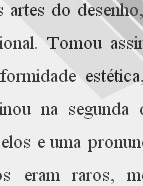

................................
In Artes e Letras [Arts and Letters], he published an essay on “Grão Vasco e a história da arte em Portugal” ["Grão Vasco and the history of art in Portugal"] (1872) and a series of eight articles on Domingos António de Sequeira (1874). Luís da Silva Mouzinho de Albuquerque (Lisbon, 1792 - 1846), an engineering colonel, inspector-general of public works, a minister of the kingdom and member of parliament, studied in France and was one of the liberal resistants of the Terceira Island and Mindelo. His only work on art was the Memória Inédita Acerca do Edifício Monumental da Batalha [Unpublished Memory on the Monumental Building of Batalha], which was published four times between 1854 and attests to his commitment in the defense of the heritage, threatened at the time by the extinction of religious orders. During his short life, Henrique Feijó da Costa (Lisbon, 1842 - 1864) attended the Curso Superior de Letras [former School of Arts], dedicated himself to heraldry, the novel and theatre, and founded the short-lived monthly journal Crónica Enciclopédica [Encyclopaedic Chronicle]. He wrote Esboços Biográficos dos Principais Pintores Italianos and Rápida Descrição Artística e Histórica dos Quadros Existentes nas Galerias de Florença [Biographical Sketches of Major Italian Painters and Biographical Sketches of Major Italian Painters and Brief Artistic and Historical Description of the Paintings in the Art Galleries of Florence], published posthumously, in 1866. Latino Coelho (Lisbon, 1825 - Sintra, 1891), a military engineer graduated from the Escola Politécnica de Lisboa [Lisbon Polytechnic School] (where he was a professor), a writer, journalist, member of parliament, peer of the kingdom and Ministro da Marinha [Minister of the Navy], wrote an art historiography marked by literary overstatement. Some of his articles, focusing on the Mosteiro de Jerónimos [Monastery of Jerónimos] and Mosteiro da Batalha [Monastery of Batalha], Raphael and on the statues of Rua Augusta arch, which appeared in the 1850s and 1870s, were compiled under the title Arte e Natureza [Art and Nature].
Nevertheless, art history lacked a figure like Alexandre Herculano to moderate inconsistent ideations and take up archival research, inventory, and informed criticism. There was still an absence of epistemological autonomy in art historiography and it remained outside the university system. Fine arts schools did not promote historical research. This accounts for the antiquated oratory of one of their directors, Francisco de Assis Rodrigues (Lisbon, 1801-1877), in his speeches in the 1850s and 1860s, and the attachment to Winckelmann, evident in the Dicionário de Pintura, Escultura e Arquitectura [Dictionary of Painting, Sculpture and Architecture] (1875).
